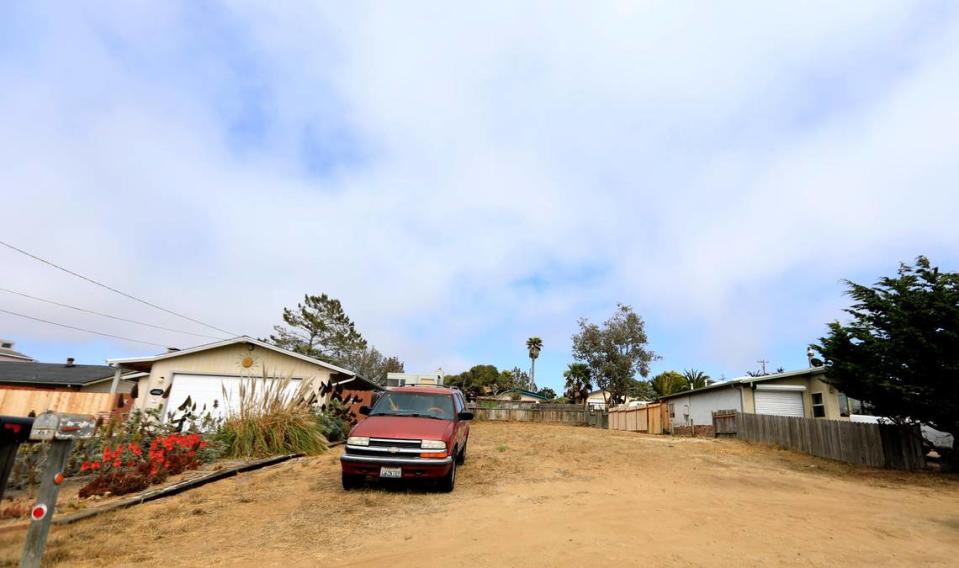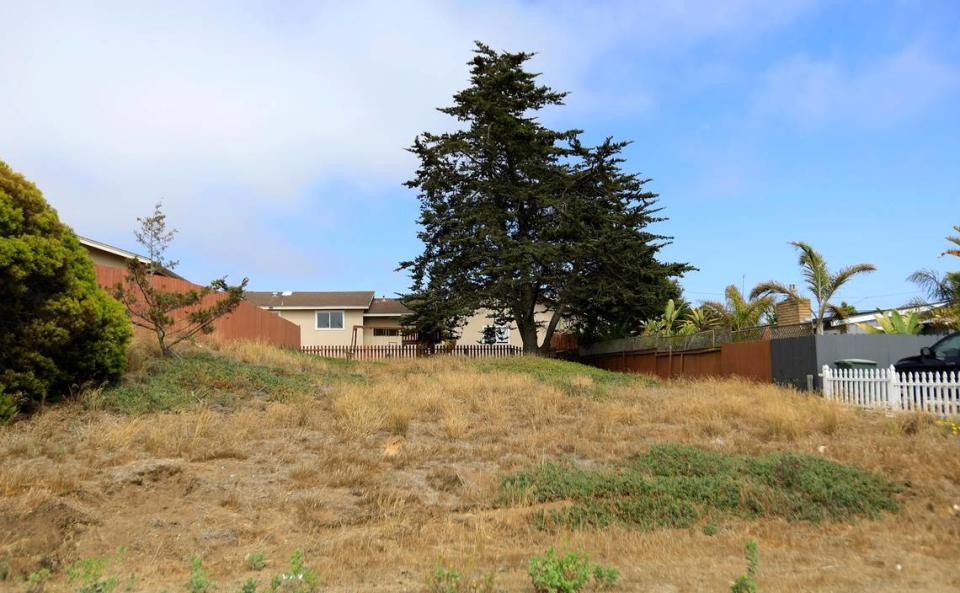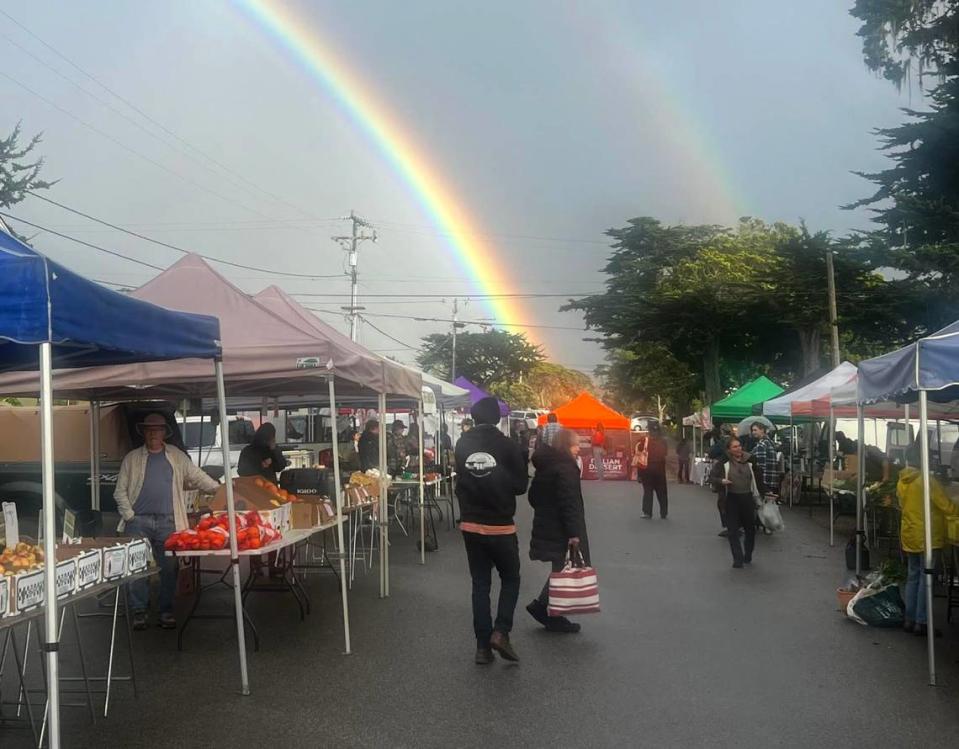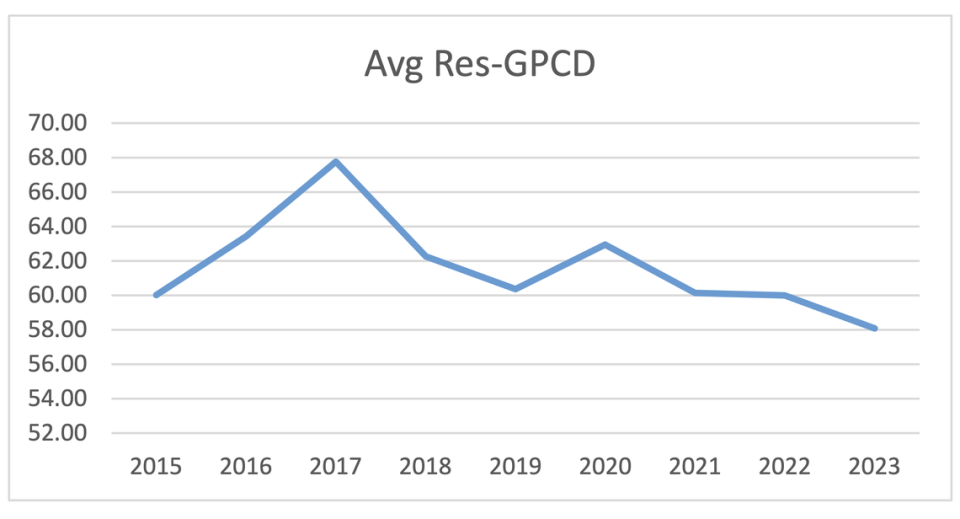Building moratorium in Los Osos could be lifted after decades. Here’s how
Los Osos could end its building moratorium by the end of the year and see new construction for the first time in decades under a plan led by the California Coastal Commission and San Luis Obispo County.
The proposal could eventually bring 1% residential growth to a community that has been under a building ban since 1988.
The history of Los Osos’ moratorium began with the septic tank discharge prohibition issued by the Central Coast Regional Water Quality Control Board in 1983. That agency found that the town’s 5,000 septic tanks were sending millions of gallons of effluent down the drain and into both the groundwater and the bay.
The county then carried out a multi-decade struggle to site and fund a new water treatment plant, finally launched in 2012 and put into service in 2016. The project cost about $180 million to build and hook up 12,500 wastewater customers to some 42 miles of pipeline. That was the first key step to allowing growth in the unincorporated town.
Despite a new sewer plant, however, the town’s building moratorium continued over another, equally contentious issue: water supply. Los Osos is unlike most communities in that its supply comes from one source, groundwater.
Los Osos famously has a long line of homeowners who have been unable to build on their vacant lots, and even today there are over 230 on the county’s wait list, some dating as far back as 1990. Once the moratorium is lifted, these applicants will be given priority to build.
In the past few years SLO County has been moving in steps to lift the long-standing moratorium but has been wrestling with the California Coastal Commission over whether there is an adequate water supply.
A few years ago, the town’s three water purveyors penned a letter to the county suggesting there may not be enough supply available to support even the existing population, much less more homes.
Indeed, there is a strong contingent in Los Osos who still feel the same and will not welcome new growth once approved, even slow growth.

Water providers agree on 1% growth target for Los Osos
But now the water providers are feeling more optimistic.
The latest news is that the three — Golden State, S&T and Los Osos CSD — have written a new joint letter this month saying they would now support a 1% growth of the population, allowing for construction of new residential units in the town.
This finally came together only after the Coastal Commission suggested it would finalize the long-awaited Los Osos Community Plan laying out where development would be allowed.
The plan has been under review by the commission since its adoption by the Board of Supervisors back in December 2020.
Since that time, the commission and county staff have been meeting to discuss how to resolve the water issues that surfaced during the update process to the plan, according to a recent memo.
Recently, Coastal Commission staff conveyed to the county that their hydrogeologist’s analysis of the data relating to the Los Osos Groundwater Basin’s sustainability now provides sufficient confidence that a maximum growth rate of 1% per year may be established for Los Osos.
The memo continues, “It is anticipated that the Coastal Commission staff’s growth rate recommendation will be made to the Coastal Commission at a public meeting in June 2024 (likely June 12th, 13th or 14th).”

Supervisor Bruce Gibson applauds decision
County Supervisor Bruce Gibson, who represented Los Osos through decades of this drama, hailed the Coastal Commission decision last week.
”The Coastal Commission’s certification of the Community Plan will be a major step in seeing a well-planned and well-managed growth resume in Los Osos,” he said. “The community has waited a long time, and I can see a bright future as Los Osos develops both its residential neighborhoods and commercial areas.”
To cobble together all approvals by this fall, a coordinated slow-motion environmental ballet is being performed involving a number of agencies offering approval after years of debate, hesitancy and negotiation.
Last February, the U.S. Fish & Wildlife agency gave approval to the Los Osos Habitat Conservation Plan (LOHCP) that will allow the “taking” of some endangered species found in Los Osos.
Most famously, that includes the Morro shoulderband snail that has kept most everybody from moving any earth in this sand-dune town for fear of harming the small snail.
But now, the snail is off the endangered list (it is still listed as threatened), and under the new habitat conservation plan, builders and home and business owners pay into a pot of money meant to mitigate any further losses without the time-consuming and expensive environmental studies or the need employ snail monitors on any development project. New development will pay into a fund for mitigation.
In the coming months, the Board of Supervisors will be asked for a general fund loan to begin implementing the habitat conservation plan through land acquisition and habitat restoration projects. This will allow the department to accrue credits that can be issued as “certificates of inclusion” to mitigate against infrastructure and development project habitat impacts.
No lifting of the building permit moratorium would have any practical benefit without this habitat conservation plan being approved.

Is there enough water?
The county also helped make it more likely that new construction will not negatively impact the groundwater supply with the adoption of the Title 19 Retrofit-to-Build Program.
Under this groundwater basin management strategy, any new development in order to proceed must comply with the county’s Title 19 requirements to offset the estimated water of a development at a 2-to-1 ratio.
In general such rules, now popular across California water districts, require new development to retrofit or pay to retrofit existing development in the community at 200% (2-to-1) of the expected demand the new development will generate. In other words, the new development more than offsets the increase in demand for water that will result.
It typically comes via plumbing fixture retrofits on other residences or paying an in lieu fee to accomplish that. This way the whole neighborhood becomes more water-efficient.
Another strategy would involve bringing in an alternate water supply to Los Osos, which the community services district is considering by connecting to the State Water Project in Morro Bay via a new pipeline.
The county argues this will make new development water-use neutral and place no new demand on the groundwater basin. Requiring offset adds another level of oversight on evaluating the groundwater basin health over time.
Another agency charged with monitoring the health of the Los Osos basin was put in place years ago after a settled lawsuit in 2015. The Basin Management Committee (BMC) advises on the health of the watershed, monitoring key metrics including precipitation, seawater intrusion, Basin Yield Metric, the water level, and chloride and nitrate levels. The latest Basin Yield Metric shows a decrease between 2022 and 2023 (an improvement) and meets the Los Osos Basin Plan goal that the BMC follows.
Working to improve each of these metrics offers some confidence that sustainability of the basin is moving closer to reality.
Looking at some of these numbers, the community has seen two good rainfall years, with 21.6 inches so far this water year and 34 inches last year. The average is about 18 inches.
But that came after the previous three years saw rainfall around 13 inches each year, well below average. California’s drought and expectation of a drier future overhang the issue of growth here. The good news is Los Osos residents continue to conserve.
Big rain years help stream flow, too. The estimated stream flow on Los Osos Creek at Los Osos Valley Road in the 2023 water year was 15,426 acre-feet, almost five times the average annual flow.
If it is raining more, the basin appears to be pumping up less groundwater — 18% less than 2022. Basin water use has experienced an overall decline since 2013 and is now at the lowest level since 1973, says a report.
The estimate of private domestic water use in 2023 has been reduced significantly from previous years, based on the recommendations of a 2023 Water Offset Study (Maddaus Water Management, 2023). “The decrease is directly attributable to the community trending toward drought-tolerant landscaping and a reduction in private lawn ... over the last 15 years.”

To bolster Los Osos groundwater, the county has set up a recycling program that recharges treated wastewater uphill from the town, which is expected to increase groundwater supply as well as push back against seawater intrusion.
Schools and the community park will retire wells and irrigate with this recycled “purple” water.
One more metric is the presence of nitrates in the groundwater.
In the case of one purveyor, S&T Mutual Water, nitrate levels are close to maximum and the county and water board may decide to install monitoring wells to see if the town’s one remaining big septic tank subdivision — Cabrillo Estates — is leaching nitrates into lower elevation water wells and should be required to connect to the community sewer system like most of the rest of the town.
Gibson sits on the Basin Management Committee along with the water purveyors and argues Los Osos can move forward, knowing that they are actively managing the basin.
To critics who argue allowing growth threatens the health of the basin, Gibson has said in the past, “As we get moving forward, we will monitor how the water supply responds. That’s where adaptive management comes in.”
“We’re going to grow at a rate we can monitor and adapt to.”
The latest report shows that per-capita water use and water production trends are going in the right direction: down.
A 1% growth rate could bring as many as 60 new homes in a given year in the community of 6,000 dwellings. Low-income affordable housing also could be added on a different schedule with an expected 400 units built in the next five years. The town has few of these units.
As to the development of affordable housing in Los Osos, Gibson cautions, “The board has set an ambitious goal of meeting its state-mandated Regional Housing Needs Assessment targets. We’ll need to make some significant decisions in order to make those goals. That is, our success on that issue is not guaranteed.”
John Lindt is the editor of the Sierra2theSea.net news website.

